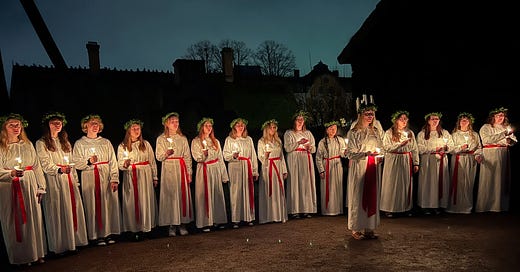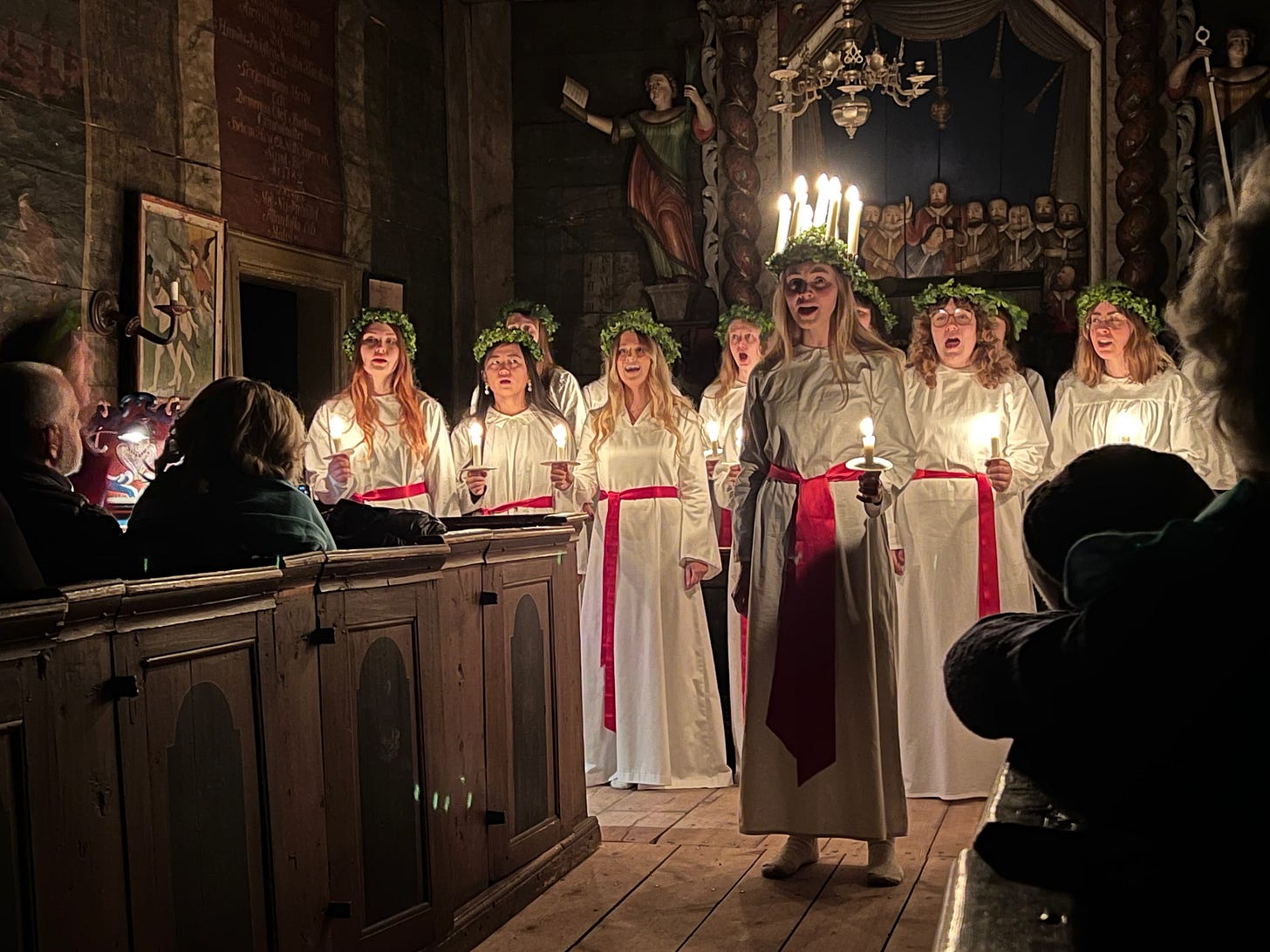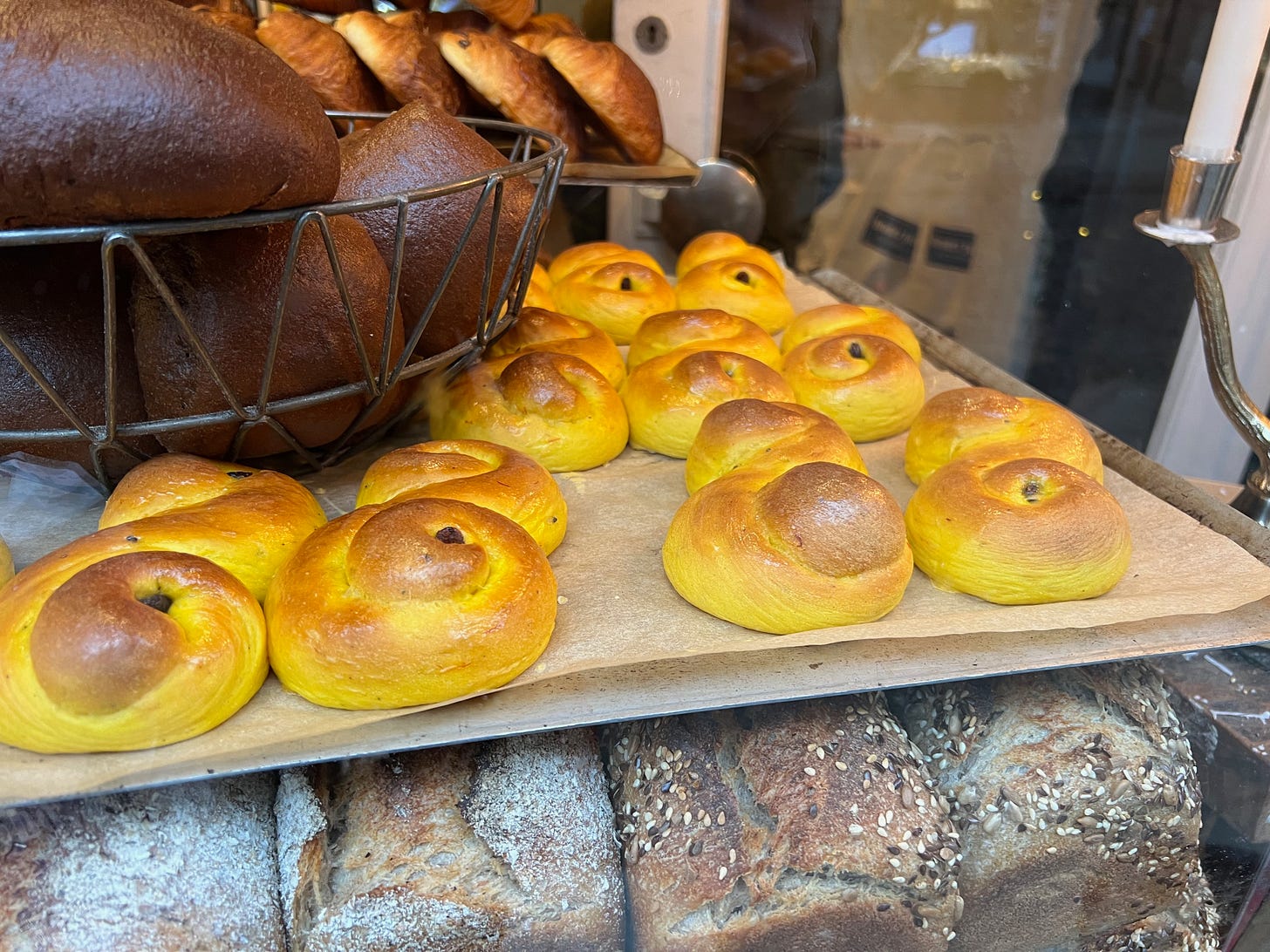In the heart of the Scandinavian winter, when darkness lingers and the days are short, Swedes turn to a time-honored celebration of light: St. Lucia Day. Held on December 13th each year, this beloved holiday brings warmth and joy to the season. Glowing candles, angelic songs, and a sense of community come together on St. Lucia Day, which itself carries deep historical and cultural significance, reminding us of the power of light to dispel darkness.
(Lucia concert performed by Bella Voce, a Lund University student choir)
The roots of St. Lucia Day weave together folklore, faith, and tradition that dates back for centuries. The celebration honors Saint Lucia, a young Christian martyr from Syracuse, Italy, who lived in the 4th century. According to legend, Lucia brought food and aid to persecuted Christians hiding in Roman catacombs. To light her way, she wore a crown of candles on her head, freeing her hands to carry provisions.
St. Lucia's story traveled northward and merged with pre-Christian Scandinavian traditions that celebrated light during the winter solstice. Before the introduction of the Gregorian calendar, December 13th was considered the longest night of the year, making Lucia’s imagery of light particularly poignant. Over time, this blending of traditions solidified Lucia as a symbol of hope and brightness in Sweden's darkest season.
While the historical celebrations have varied, today’s St. Lucia Day unfolds across Sweden in schools, churches and even city streets. Central to the tradition is the "Luciatåg," or Lucia procession. Leading the procession is the Lucia, wearing a flowing white gown and red sash around the waist with a crown of candles on the head. Behind Lucia is a procession of attendants, or tärnor, also dressed in white and carrying candles. Star boys (stjärngossar), often with pointed hats adorned with stars, and younger children dressed as gingerbread men or elves complete the group. Together, they sing traditional Lucia songs, their harmonies soft and ethereal, like whispers of comfort in the winter dark.
(Bella Voce performing in the Bosebo kyrka in Kulturen, an open-air museum in Lund)
As people gather to celebrate, the festivities are accompanied by food that adds flavor and tradition to the day. One can find saffron buns (lussekatter) and gingerbread cookies (pepparkakor), delicious treats that make for a memorable fika. Public spaces like churches and town halls hold Lucia concerts where choirs perform, bathed in candlelight and reverence. In workplaces and schools, the Lucia procession often surprises with its joyful simplicity—a moment of pause to embrace beauty and tradition. At our international school this year, R’s class performed the Luciatåg for parents and the entire school where they sang a variety of Swedish and English holiday songs to the delight of everyone.
(Lussekatter in the window of Broder Jakobs, our local bakery)
St. Lucia Day brings a unique kind of joy—quiet, reflective, yet full of warmth. The act of gathering, whether in a small or grand space, fosters connection in a season that can otherwise feel quite isolating. The flicker of candles against the winter darkness mirrors a deeper longing: to find and share light when we need it most. While I am new to this country, I can appreciate how this day stirs nostalgia. The songs, unchanged for generations, link the present to the past. The warmth of lussekatter shared among loved ones reminds people of simple pleasures. It is a day for reflection, gratitude, and the gentle reassurance that light always returns.
While Lucia Day is a distinctly Swedish celebration, there are certain American traditions that bring something similar. For example, Christmas caroling in the USA brings people together through song. Both traditions celebrate community, goodwill, and the beauty of shared experiences. However, where Lucia emphasizes tranquility and light, American holiday celebrations tend to be louder, more colorful, and infused with a sense of festivity.
The closest American parallel might be the growing popularity of candlelight services during Christmas Eve, which also honor themes of reflection, light, and togetherness. While Lucia remains deeply rooted in Scandinavian heritage, its universal message—finding light in darkness—resonates across cultures and continents.
During these darkest days of the year,I appreciate St. Lucia Day as a gentle ritual of light, song, and community. It invites us to pause in the darkness and embrace a sense of hope and wonder. In a world that often moves too fast, Lucia reminds us of the quiet power of tradition and the joy of coming together. For anyone lucky enough to experience Lucia Day, whether in Sweden or elsewhere, the memory lingers—and reminds us that light is coming.







Love your article Shauna. I remember this holiday was very special to my Grandmother. She would invite us over to sing carols in her basement where she had a huge old fashioned organ. Fond memories. Thank you!
Thank you Shauna, The photos are lovely as are the descriptions. I light our window candles by 4 PM and will not remove them until March. Solidarity through the Solstice and toward the vernal equinox.